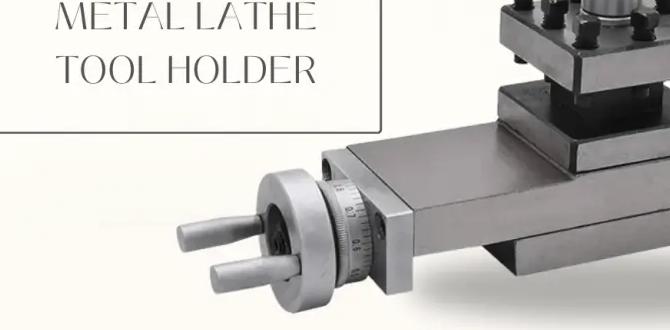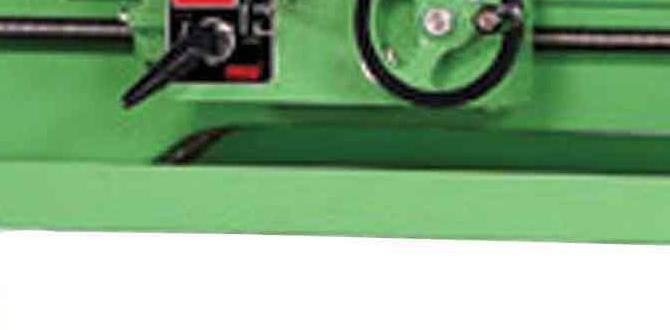Wood Lathe Chuck Tool: Easy Homemade Fix
Securing your workpiece is paramount when working with a wood lathe. A properly gripped blank ensures safety, precision, and ultimately, a stunning finished product. The heart of this secure grip lies in the wood lathe chuck, a vital accessory that clutches your wood and spins it true. While chucks are designed for robust functionality, the act of tightening and loosening them can sometimes be a struggle, especially if the dedicated chuck key is lost, damaged, or simply awkward to use. For many woodturners, a wood lathe chuck tightening tool homemade solution offers a practical and cost-effective alternative.
The standard chuck key, often a simple L-shaped allen wrench or a T-handle with a square drive, is typically provided with your chuck. These tools are designed to engage with the set screws on the chuck body, allowing you to expand or contract the jaws for gripping. However, wear and tear, accidental misplacement, or even the inherent design of certain chucks can make these keys less than ideal. Some older chucks may have recessed set screws, making it difficult for standard keys to get a good purchase, while others might require a significant amount of torque to tighten securely, leading to hand strain or discomfort. This is where the ingenuity of the woodturner shines, leading to the development of various wood lathe chuck tightening tool homemade options.
Why Consider a Homemade Chuck Key?
The reasons for seeking an alternative to a standard chuck key are numerous and often quite relatable to any woodturner. Firstly, cost is a significant factor. Replacement chuck keys can be surprisingly expensive, especially for specialized chucks. If you’re on a budget or simply prefer to allocate your funds to wood or new turning tools, a DIY solution immediately becomes attractive.
Secondly, ergonomics and comfort play a crucial role. Some homemade chuck keys are designed to provide better leverage or a more comfortable grip than the original tool. This can be particularly beneficial for individuals with hand weakness, arthritis, or those who find themselves spending long hours at the lathe. A well-designed homemade tool can reduce fatigue and increase turning enjoyment.
Thirdly, durability and availability can be an issue. The small metal rod of a typical chuck key can be easily bent or broken under significant torque, especially if the jaws are seized or require substantial force. Furthermore, in larger workshops with multiple tools and projects, these small keys can easily get lost amongst the clutter. Having a robust, easily identifiable homemade tool readily accessible is a welcome convenience.
Crafting Your Own Wood Lathe Chuck Tool
The beauty of a wood lathe chuck tightening tool homemade project lies in its simplicity and the wide range of materials and techniques you can employ. The most common approach involves modifying existing tools or repurposing everyday items into a functional chuck key.
One popular and straightforward method involves using a discarded piece of metal rod with the appropriate square or hex profile to fit your chuck’s set screws. A sturdy metal bolt, a piece of rebar, or even an old drive shaft can be cut to length. The ends that engage with the chuck’s set screws will need to be carefully shaped. This might involve filing, grinding, or even using a metal lathe to create the precise profile required for a snug fit. For a T-handle design, you can drill and tap a larger diameter rod or pipe to create a sturdy handle that allows for excellent leverage.
Another effective wood lathe chuck tightening tool homemade solution involves adapting existing tools. For instance, a large, old-fashioned socket wrench handle can be modified. By welding or brazing a suitably sized square or hex piece to the end, you create a robust and comfortable turning tool. Similarly, a piece of hardwood can be shaped into a comfortable handle, and a metal insert, perhaps a piece of square steel tubing that fits your chuck’s set screws, can be epoxyed or bolted into place. This combines the comfort of a wooden handle with the necessary strength for the metal insert.
For those with access to welding equipment, creating a truly custom and professional-looking chuck tool is well within reach. You can weld a square or hex bar onto a sturdy handle, perhaps made from a larger diameter steel rod or even a repurposed automotive part. The key is to ensure the engaging end is precise and strong enough to withstand the forces involved in securely clamping your workpiece.
Safety First!
While embarking on a wood lathe chuck tightening tool homemade project is exciting, it’s crucial to prioritize safety throughout the creation and usage process.
Material Strength: Ensure the materials you use are strong enough to handle the torque required. Brittle metals or poorly joined components can fail catastrophically, posing a significant risk of injury.
Fit and Finish: The engaging end of your homemade tool must fit the chuck’s set screws snugly. A loose fit can strip the screws, damage the chuck, or slip during operation, leading to accidents. Smooth out any sharp edges or burrs to prevent snagging on your workpiece or hands.
Handle Security: If you’re creating a multi-piece tool, ensure the handle is securely attached to the engaging end. A handle that detaches during use is extremely dangerous.
Testing: Before using your homemade chuck key on a valuable piece of wood, test its functionality and strength with a scrap piece. Apply increasing torque gradually to identify any potential weaknesses.
Never Force It: Even with a robust homemade tool, never force a stuck set screw. Instead, try applying a penetrating lubricant or gently tapping the set screw to free it.
Workshop Awareness: Always remain aware of your surroundings when using any woodworking tool. Keep your hands and clothing clear of the spinning workpiece and ensure your tool is easily accessible but stored safely when not in use.
By following these guidelines, you can confidently create and utilize a wood lathe chuck tightening tool homemade that enhances your turning experience, saving you money and providing a more comfortable and reliable solution for securing your work. The satisfaction of crafting your own essential workshop tool is a rewarding aspect of the woodworking journey.






